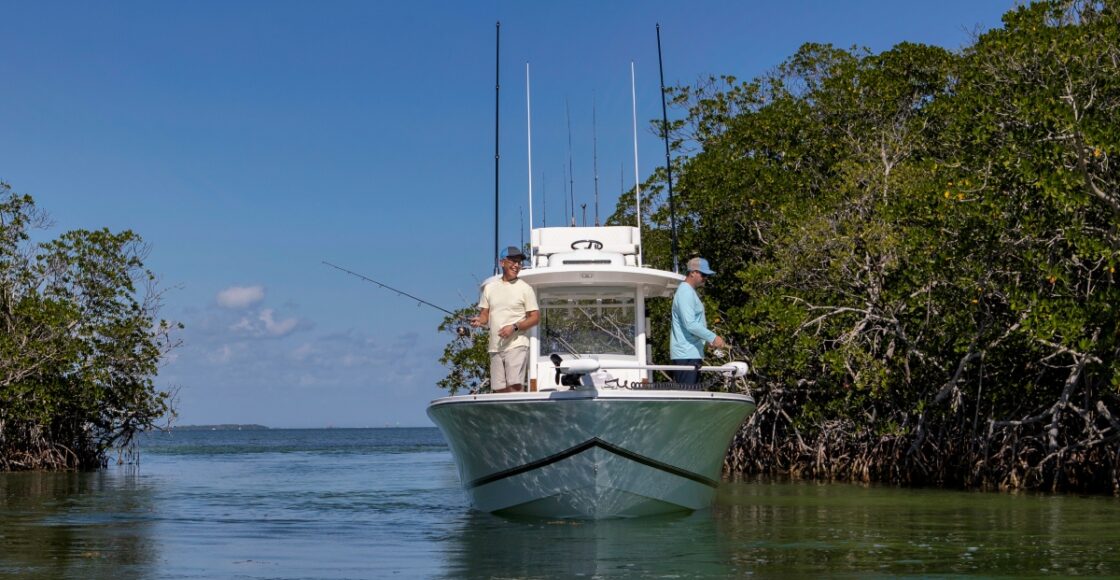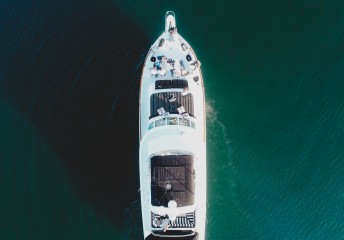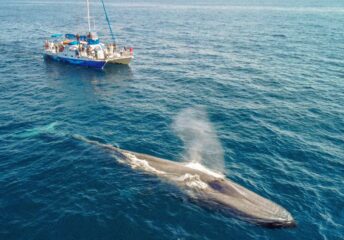Florida Mangrove Fishing: Expert Tips for Anglers
Last Updated on October 10, 2024 by Boatsetter Team
Mangroves provide tons of hiding places for both baitfish and predators, making them a top form of structure in many of Florida’s inshore fishing waterways. Top targets like snook, redfish, and speckled trout can be found hiding and hunting in the mangroves, and of course you may also hook into the popular mangrove snapper, treasured for its excellence on the dinner plate.
What Are Mangroves?
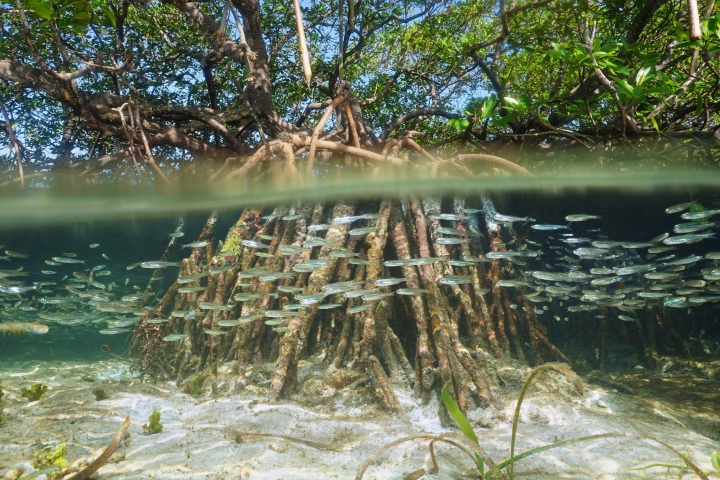
Mangroves are saltwater-tolerant trees and shrubs that live at the water’s edge in tropical and subtropical waterways. A mangrove isn’t one particular type of tree, as there are actually dozens of different of different types and several found in Florida, including red mangroves, black mangroves, white mangroves, and buttonwoods. The reason mangroves attract fish is that their tangled roots crawl down into the water, often several feet out from land. These roots create structure that fish use for cover.
In Florida, mangroves are most commonly found along the state’s southern coastlines, thriving in places like the Florida Keys, the Everglades, and parts of the Gulf Coast. The Ten Thousand Islands in Southwest Florida is a well-known area where mangrove forests dominate, creating ideal habitats for fish. Mangroves can also be found along Florida’s Atlantic Coast, stretching from Miami up to Cape Canaveral, although they become less common further north as the climate shifts.
These rich ecosystems are teeming with life. Mangroves are commonly full of baitfish looking for a place to hide, along with crabs, shrimp, and sessile organisms like barnacles. So, there’s plenty of food for predators to find around the roots. All sorts of species can be found near them, too. In addition to the ones we mentioned above, juvenile Goliath groupers, tarpon, grunts, jacks, sheepshead, and various other species of snappers can be found in mangroves.
How to Fish Mangroves
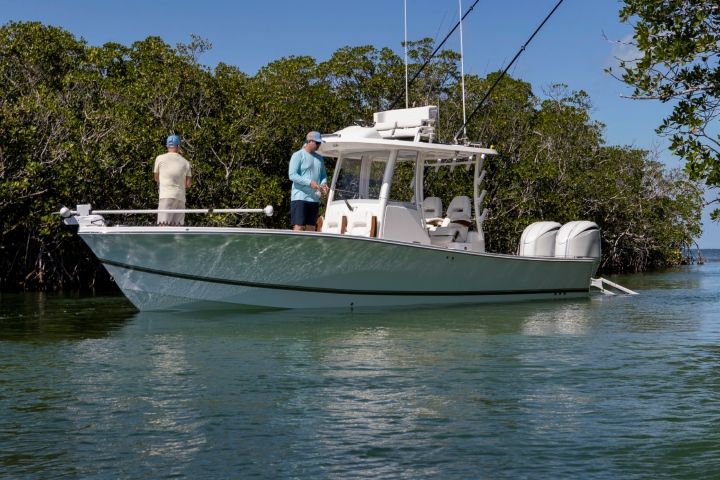
To fish the mangroves, first you’ll need to get to them. Most of the hotspots are going to be in isolated creeks or islands, so with few exceptions, you’ll need a boat. If you don’t own one of your own, renting a small center console or hiring a Florida fishing charter is your best bet. Once you get there you can fish either bait or lures, but it’s hard to beat casting out live shrimp. Just about everything living here loves to eat shrimp, shrimp, and more shrimp. They can be fished on a bare jig head, beneath a popping cork, or “freelined” with nothing but a hook on the end of your line.
Fishing lures in the mangroves can be very effective, too, especially with soft lures like flukes or paddle tails. Plastic shrimp are another great option and today, there are many on the market which look real enough to fool the wariest fish. Cast and retrieve them, or work them along under a popping cork. If you want to target specific species, however, you may want to choose your lures accordingly. Topwater plugs and twitchbaits can be particularly effective when snook and/or tarpon are in the crosshairs. If redfish are the main species of interest, wobbling spoons and shrimp under popping corks are top picks. The best lures for mangrove snapper will generally be shrimp imitations, though small twitchbaits and swimming plugs can also prove effective.
Where to fish in the Mangroves
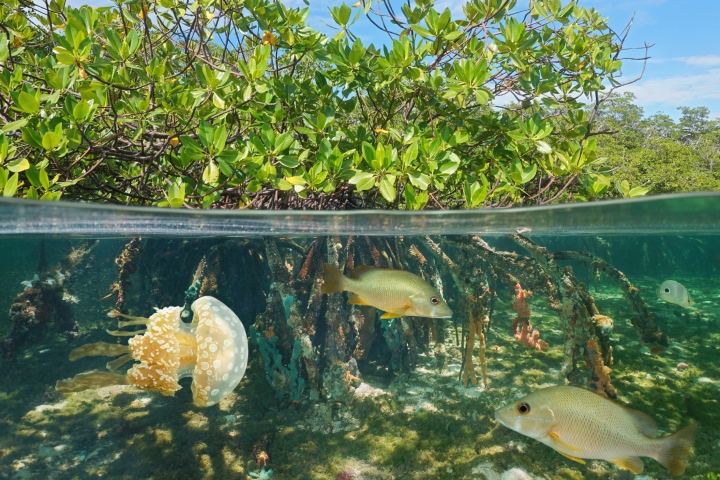
Okay: you’re looking at acres and acres of mangroves and wondering where to cast? Don’t pick any old spot and start flailing the water. Generally speaking, the majority of the predators will be found in spots that have current, where the bait is concentrated. That means points jutting out away from the rest of the shoreline, and cuts or creeks that extend into it. However, there’s a complicating factor: since the fish are usually close to or even inside of the roots you’ll need to cast very close to them—which means snagging is quite common. Be sure to bring plenty of extra tackle, because breakoffs are almost guaranteed.
Generally speaking it’s best to focus on those points and cuts and keep moving until you locate some fish. Don’t spend hours at a time working along long stretches of mangroves, and instead, hop from one point or creek mouth to another, work the shoreline for 20 or 30 yards to either side, then move on to the next.
Tips for Fishing in Florida Mangroves
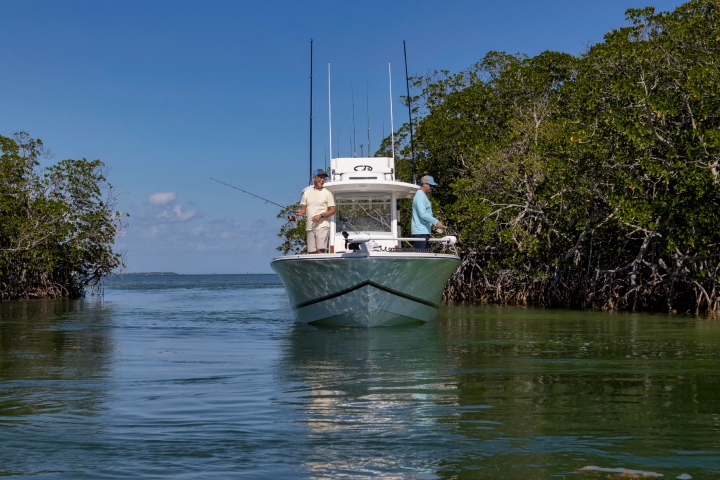
Okay: ready to give fishing the mangroves a shot? Keep these top three tips in mind and you’ll be enjoying a fresh fish dinner in no time.
- When you get a bite apply maximum pressure right from the start. The fish will try to dart back into the mangrove roots for protection, and if you let it do so, there’s a good chance your line will become fouled or get chafed off.
- Watch the roots for movement. It’s not unusual to see feeding fish rub up against them, tipping you off to their presence.
- During the heat of summer and the chill of winter, look for holes, depressions, and channels near the mangroves. In the summer a bit of depth can provide a cool spot, and in the winter, a warm spot. When the temperatures get extreme often the fish will find these deeper areas more comfortable and will stage there.
About us
Boatsetter is the leading online marketplace for boat rentals and on-water experiences. Download the Boatsetter app (App Store | Google Play) and follow us on Instagram.
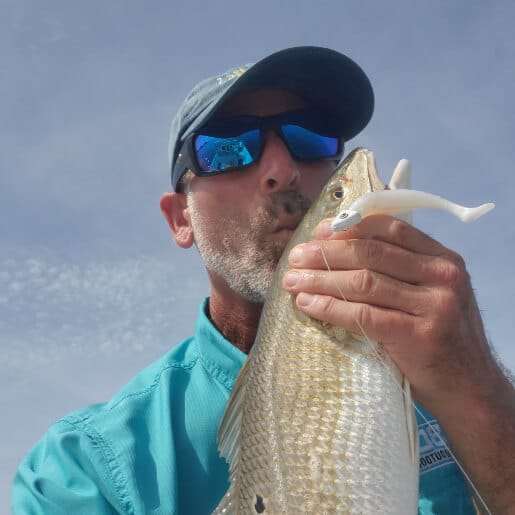
With over three decades of experience in marine journalism, Lenny Rudow has contributed to dozens of boating and fishing publications and websites ranging from BoatU.S. Magazine to BDOutdoors.com. Rudow is currently the Angler in Chief at Rudow’s FishTalk, he is a past president of Boating Writers International (BWI), a graduate of the Westlawn School of Yacht Design, and has won numerous BWI and OWAA writing awards.
